Daylily diseases: causes and fight against them
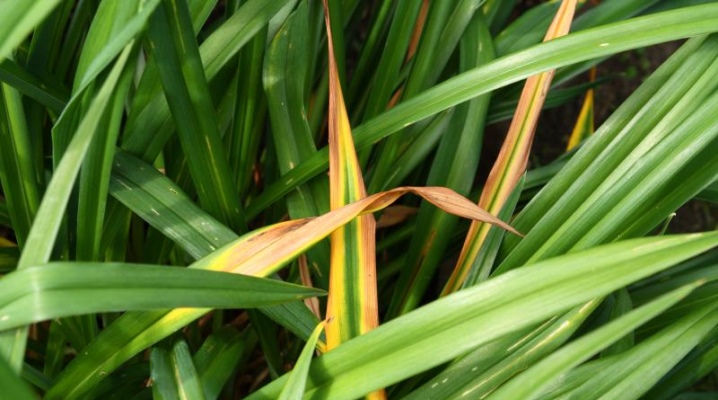
In its natural habitat, the daylily is a rather unpretentious flower, and an artificially grown plant is quite vulnerable to diseases and pests.
The main causes of ailments
The causes of daylily disease may be:
- bacteria;
- fungi;
- viruses;
- nematodes;
- ecology problems;
- insect pests.
A sharp deterioration in the condition of the plant over several days, most likely, indicates a viral or bacterial origin. To protect other crops, diseased plants must be destroyed immediately.
The slow deterioration of the condition of the plant can be caused by environmental problems or fungal diseases.
Visual inspection of plants and correlation with the description of diseased plants will help to make the correct diagnosis and plan the treatment of the disease.
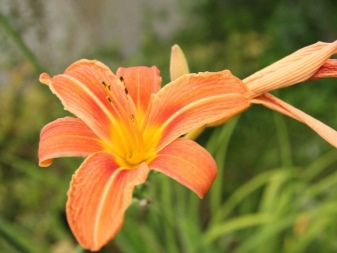
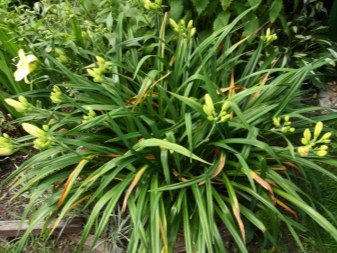
Common diseases
Finding out the exact cause can be difficult, as an unhealthy appearance can be the result of several diseases. But any disease is much easier to prevent than to eliminate.
Root collar rot
One of the most common diseases is root rot. Infection occurs with the help of pests or due to poor air circulation in the soil. Overly buried planting and freezing of the roots can also become the cause of the disease. Quite often, the disease manifests itself with the help of yellowed leaves.
For treatment, it is required to reduce the amount of nitrogen fertilizers, prevent water retention during watering and slightly dry the root of the daylily before planting it in the ground.
Sometimes the disease is not limited to yellowing of the leaves, but becomes more severe, expressed by the appearance of decaying roots, a softened stem in the lower part of the plant. In this case, the daylily should be dug up immediately. After that, it is required to remove the damaged areas and treat the cut sites with a disinfectant. For this, a strong solution of potassium permanganate is suitable, in which the root and the diseased part of the stem are placed for 20 minutes. After disinfection, the culture is carefully dried in the shade in the open air. This should be done for 2-3 days, until the sore spots dry out and become hard.
The cured flower should be planted in a different place, since infectious agents may remain on the former.
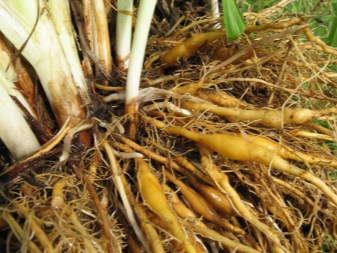
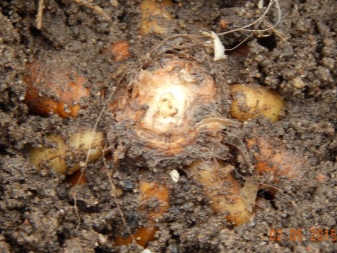
Striped leaves - streak
Striped leaves are classified as fungal diseases. At the same time, yellow strokes appear in the center of the leaves, which subsequently acquire a reddish-brown color. In this case, the plant does not die, but the diseased leaves fall off. Insects can also be the source of the disease, this can also be the result of unfavorable weather conditions or the consequence of a violation of the rules for caring for the plant.
Sometimes treatment is carried out by treating the plant with fungicidal preparations with the concomitant removal of the affected leaf plates.
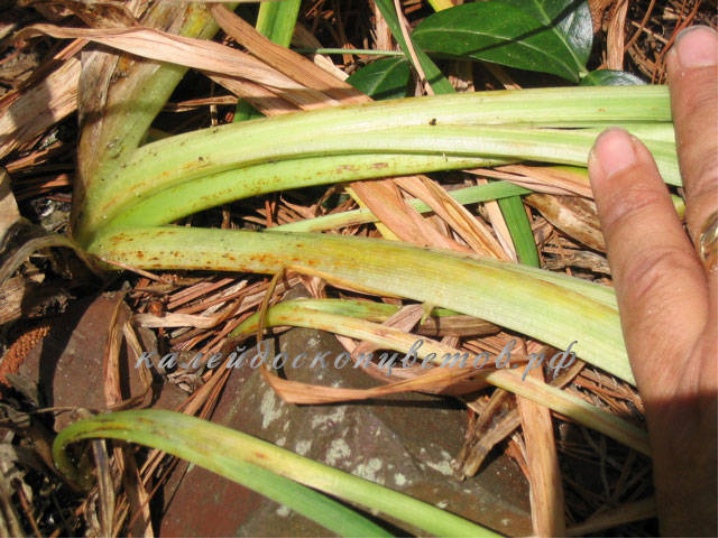
Rust
Fungal diseases also include the appearance of so-called rust on the buds and leaves. It looks like yellow-orange pustules. The daylily does not die, but its growth slows down and it stops blooming.
Fungal spores are transmitted by air. They take root very well on valerian plants. For this reason, they should not be planted near daylilies.
At the moment, no ways of dealing with the developed disease have been identified, so much attention should be paid to preventive measures to prevent the disease.
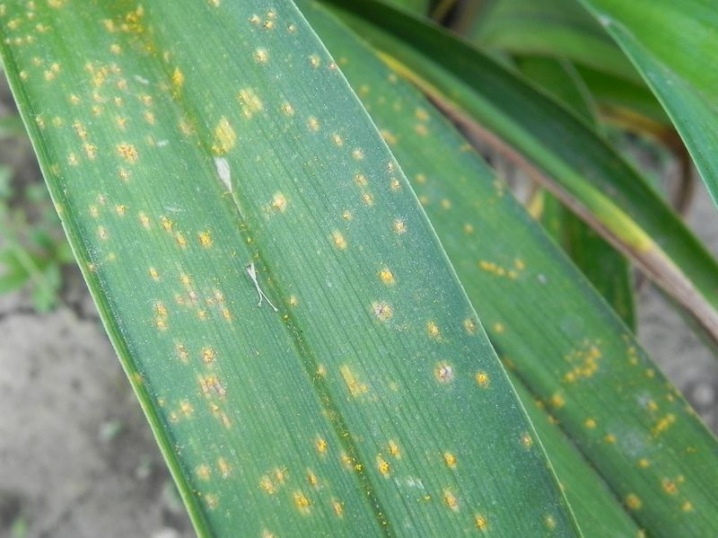
Chlorosis
Chlorosis is manifested by a change in the color of the foliage. Instead of a healthy green color, it takes on a pale yellow color. The reason for these changes is the lack of chlorophyll. Yellowing can be focal and ubiquitous, all over the leaf blade. The plant can completely die from this. Chlorosis should not be confused with the natural yellowing of old leaves.
The cause of the disease can be soil oversaturated with lime with a lack of iron content with a certain alkaline reaction, which impedes the movement of mineral salts. Also, the daylily can get chlorosis due to a violation of the nutrition of the root system, excess or lack of moisture, hypothermia of the soil, toxicity of substances (herbicides), insects.
Chlorosis can also occur with infection. In this case, the spots on the leaves are colorless. As experienced flower growers say, such a disease also develops when roots are injured during transplantation, when the dates for digging a crop are not observed, and when planting in heavy, water-saturated soil, especially when it is pre-fertilized with manure.
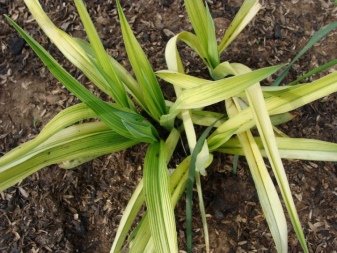
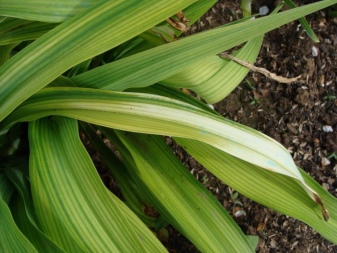
To combat the disease, you need to understand its source. Perhaps getting rid of the problem by slightly acidifying the soil or enriching it with iron preparations. Removing excess moisture and killing insect pests can also help.
Spraying the plant with Ferovit, which contains nitrogen and iron chelate, helps with chlorosis.
Dangerous pests - daylily mosquito and thrips - lay their larvae in buds, after which the buds stop growing in length, expand and deform.
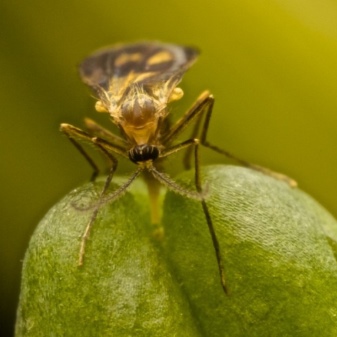
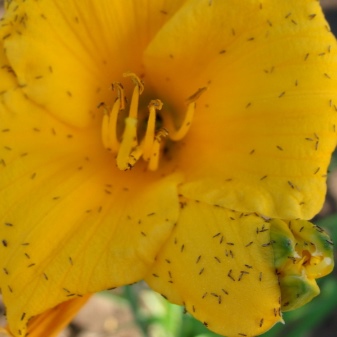
Disease prevention
Reduce the risk of disease adherence to simple rules will help:
- timely removal of wilted buds and yellowed at the tips of the leaves;
- cutting off underdeveloped shoots;
- destruction of weeds in the peri-stem zone;
- sparse planting of culture;
- periodic disinfection of garden tools;
- destruction of plants with signs of viral diseases;
- optimal application of nitrogen fertilization;
- watering under the stem, and not on the foliage.
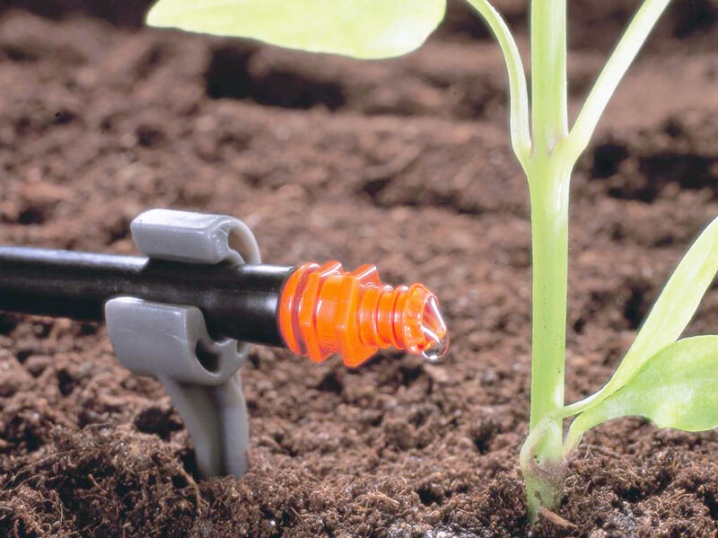
Non-communicable problems
When daylily leaves turn yellow and their tips dry, this may not be the cause of infections. For example, in the process of dividing a fan, the leaves begin to crack, age and die off. Because of this, they acquire a yellow color. Leaves that have been frozen by frost can also turn yellow.
Other problems not related to daylily diseases include:
- uneven coloring of the flower;
- horizontal or vertical rupture of the stem or its crackling;
- grassing;
- premature, too early opening of the flower;
- insufficient saturation of the sepal with flower pigment.
These problems can arise due to violations of the temperature regime, irregular watering, unbalanced feeding, and even due to stressful situations to which this plant reacts painfully.
Subject to the simple rules for caring for the plant and carrying out the necessary preventive measures, the daylily will fully reveal its pristine beauty and for many years in the summer it will delight with its gorgeous flowering and healthy greenery.
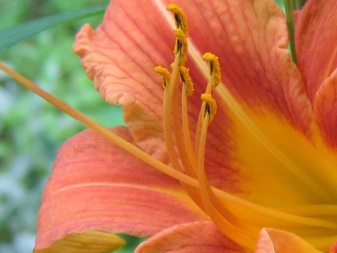
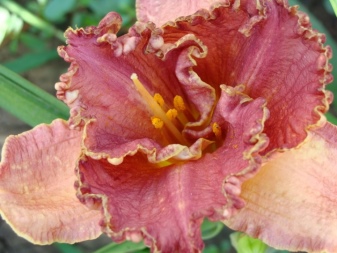
See below for proper daylily care.




































































































The comment was sent successfully.